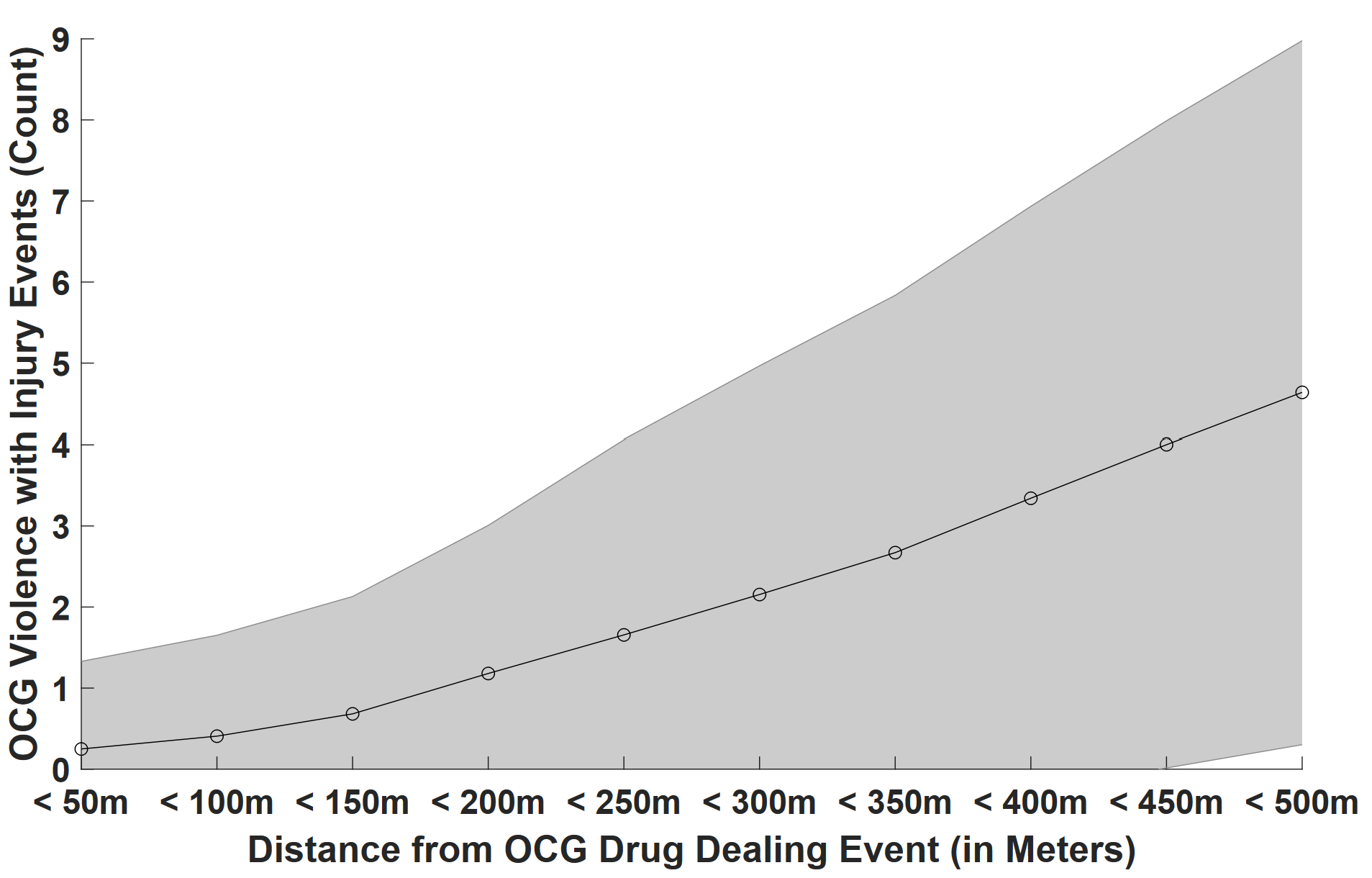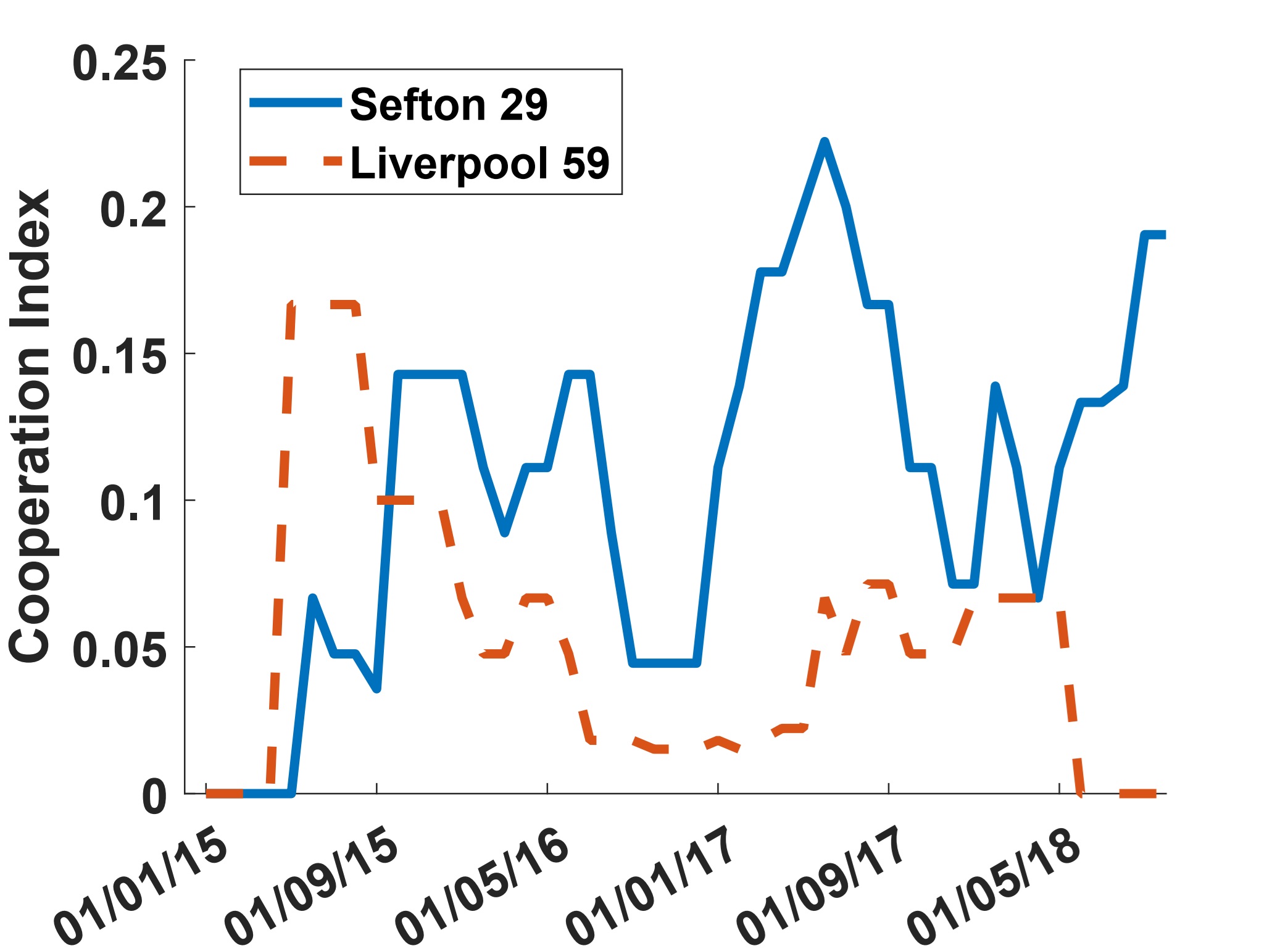Gang Cooperation, Drugs and Violence in U.K.
How Organized Crime Groups Interact - A Theory of Differential Cooperation
Gang violence is a pressing emergency in urban realities across the western world, and it is considered a fundamental driver of the contemporary knife epidemics characterizing U.K. in recent year. This work is at the center of a series of papers I am working of with Paolo Campana in coordination with various police forces, particularly Merseyside Police and Metropolitan Police to understand the fundations of this phenomenon and what we can do to tackle it.
The Project:
What are the mechanics and the implications of cooperation between Organized Crime Groups (OCGs)? These are largerly under-explored in the literature and as a result, academic research can provide little guidance to practicioners and police forces. In this work, we study the determinants of cooperative interactions among OCGs operating in Merseyside (UK) using the complete crime dataset integrated with neighborhood-level socio-economic data and sentencing outcomes.

We first address the puzzle of the coexistence of stable illegal markets and OCG violence: drug markets are contendible and OCGs resort on cooperation to mitigate risks of unbounded competition. Hence, the nexus between markets and violence is mediated by the structure of inter-OCGs cooperation (or lack thereof). We find that, net of urban and socio-demographic factors, violence is consequential to cooperation failure. Second, as in illegal markets contracts are not enforceable, incentives to collaborate and profit-sharing mechanisms are distorted. We posit that OCGs select partners and collaborations to balance risks and opportunities. Relative to the former aspect, we show that cooperation is differential as it is more likely to realize between groups characterized by asymmetric control of territory. Relative to the latter, OCGs are selective in the nature of interactions, with a positive relationship between expected returns (and associated risks) and cooperation intensity. Importantly, this mechanism complements network-based strategies used by OCGs for mitigation of risks involved with partner selection.
Why Does it Matter?

Our work points to four policy implications. Firstly, it highlights the importance of considering self-organised groups of offenders as strategic entities when developing interventions aiming at curbing their activities as well as broader illegal markets. It is particularly important to understand how groups select their partners and opportunities in their local areas to improve the efficacy of interventions. Secondly, our work suggests that interventions aimed at curbing OCG-related violence need to take into account the structure of cooperation among the OCGs active in an area as cooperation and violence are two sides of the same coin, with violence likely to erupt as a result of breakdown in cooperation within the OCG milieu. Thirdly, our findings stress the importance of group-level relational mapping if we are to understand the workings of illicit markets as well as adverse dynamics at the community (urban area) level. Finally, this work has also offered a novel way of measuring turf control and a new index of cooperation that analysts might find useful when developing evidence-based interventions and, crucially, tracking the subsequent short- and medium-term consequences (including those unintended) of such interventions
Team:
- Dr. Andrea Giovannetti, Australian Catholic University (andrea.giovannetti@acu.edu.au)
- Prof. Paolo Campana, University of Cambridge (pc524@cam.ac.uk)